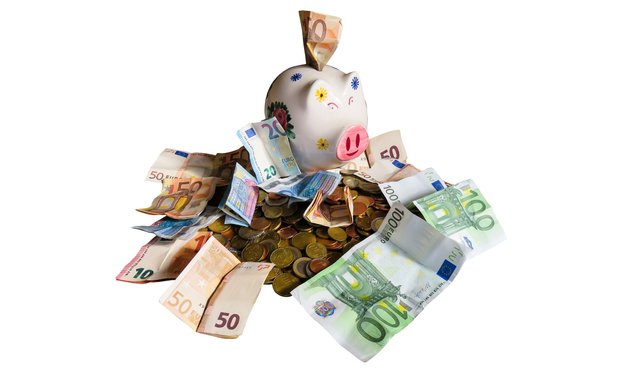Very Easy Risk Management

I wrote this article earlier about risk management but I think it's too long and complicated, probably most people have no idea what I have talked about and I have a bad habit of going on side tangents when I talk about a topic so I will simplify it even more:
Risk
First of all there is he Risk formula which is:
Risk = Probability of Bad Event * Loss of at Bad Event
And I mostly use this in finance, but it could apply just as easily to any other form of risk. Now the probability is obvious, it either has to be pre-sampled from some known statistic like the probability of a car crash is like 0.015%, or the probability of a 5 in a dice game is 16.66%, and like that.
The loss is usually given as the average loss, but that will imply a margin of error, because the loss could be much lower or much higher than that. So it is much better in my opinion if we assume the maximum loss, and then we won't have to deal with margins of error. And what does a maximum loss mean? Well I'd just use a 5 sigma standard for that. A 5 sigma standard means 5 standard deviations away from the mean. So in a normal distribution that will cover 99.99994267% of the cases, so the error margin becomes negligible, it would happen only once in 4776 years at a daily resolution.
So essentially the risk formula is:
Risk = Probability of Bad Event * Maximum Loss at Bad Event5 σ
If we don't know the probability of the bad event, but assume that it's imminent or certain to happen, then we can assume a 100% probability for it, this way we can plan for the absolute worst case scenario
Risk = Maximum Loss at Bad Event5 σ
Reward
Now why would we risk something? Certainly not for nothing. We'd expect a reward for our taken risk. So that has to be incorporated into our calculations.
In the expected reward we'd also want to assume the worst case scenario, better to underestimate it than to overestimate it.
The general formula for the reward is:
Reward= Probability of Reward * Amount of Reward
Now for the probability we again have to look for samples or estimate it ourselves. The amount has to be the mirror image of the risk side if we want to catch all events into the logic.
So if we assume a maximum damage, then we also must assume a maximum gain. The probability of reward is always (1-RISK), so if your risk is 99% then the reward is the other 1%.
And the amount of reward is the opposite spectrum of the amount, so in the stock market we have an average monthly LN return (yes use LN please because percentages are not additive) between 2001 and 2017 of 0.42% and a standard deviation of 4.08%, so this means anything between +20.84% and -20.84% (of course we would need a larger data sample since the market is not normally distributed and things like the 1929 stock crash is a possibility too).
So in this situation the probability distribution is symmetric and the area above and below the mean has the same probability, but with things like a dice game where you have a 1/6 chance of winning and a 5/6 chance of losing, things might not be symmetric.
Also keep in mind that without additional information there is usually a 0 expectancy, meaning that over the longterm the profit will be 0 or even negative if you add in taxes, fees, and additional costs. Sort of like how the house always wins but the trader, without additional analysis and information, loses.
Expectancy
So putting it together the final expectancy formula is this:
Expectancy= Probability of Win * Amount of Win – Probability Loss * Amount of Loss
And again you have the flexibility of tweaking all numbers, whether you want to deal with margins of errors or you want a certain calculation covering all side-effects.
Note that if you want to be rigorous, you’ll find that almost no market has a positive expectancy and all of them carry an essential huge risk with them, ranging from shady brokers/exchanges to all sorts of problems, not just financial but regulatory, political, fiscal, etc…
So really, when they say that “trading is risky”, that is literally true. But it takes the skills and analysis of a professional to overcome those risks to gain an edge over the market. Most of the time most traders are predictable, and those that can spot it will make money.
They say that psychologists are the best traders because they know when to buy and sell just by looking at the mass hysteria or mass euphoria and deduce a strategy just on that. Social media can help observing the mood of the masses.
Disclaimer: The information provided on this page or blog post might be incorrect, inaccurate or incomplete. I am not responsible if you lose money or other valuables using the information on this page or blog post! This page or blog post is not an investment advice, just my opinion and analysis for educational or entertainment purposes.
Sources:
https://pixabay.com

I want you to write another post about AMP, Synereo and WildSpark.
I will later, at the moment I haven't kept up much with the altcoins.
disclaimers :) the day and age we live in ... interesting ... vote and resteemed ... i just read a worrying bit about someone being locked out their account without warning though so i hope its possible to keep the crypto in an external wallet without the need to cash out ... b/c no amount of risk management could prevent that
Yes the ultimate risk in cryptocurrencies is theft & being locked out of your money due to forgetting a password. Perhaps the latter is more likely than theft.